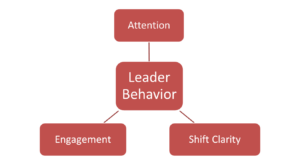All companies have to manage significant transitions if they are to endure. Yet, apparently, very few do. A recent Gallup poll found that it is still true after decades of data collection that 50% of companies fail in the first five years, and fewer than 5% survive 10 years or longer.
I wrote in my last blog post that while beginnings are quite unique from endings, endings teach entrepreneurs three important lessons: the power of focus, meeting the challenge of discipline, and leading significant transitions. If you look at that Gallup research on causes of business failure, many have to do with these three factors. My last post looked at focus and discipline. I saved transitions for this one.
Transitions Are Significant SHIFTS in an Organization’s Life
I spent about 20 years working with executives involved in leading significant transitions. Some were companies managing inflection points in their company’s early life, as they went public for example; a number were company transformations driving out long-established bureaucracy; a few were merger integration transitions; and others were leadership transitions as founders planned their exits. None of them went out of business.
I also spent those 20 years leading the transitions in my own company that contributed to its celebrating 25 years in business a few years ago — part of that rare 5% of successful companies.
What I learned in those years was that transitions are fundamental shifts — not always earthquakes, but never subtle. They always involve shifts in one or more elements of a company: its mindsets, practices, structures, direction, behaviors, and relationships. And the more important they are to the growth or survival of a company, the harder they are to execute. Fewer than 30% of key company change and transition efforts succeed, according to major studies over the last 20 years.
In part, this poor success rate is due to a failure to understand and lead the set of shifts required. Like any sport we enjoy where we want to move to a new level of play, it’s seldom one aspect of the game we must focus on or one technique that will make the difference.
For retiring business owners planning their exit, shifts include, for example, letting go of the reins (mindsets and behaviors), building bench-strength (practices), and re-aligning customers or cleaning up accounts (relationships, processes, and structures) so that a business is sustainable and more salable.
Entrepreneurs building their companies face similar transitions. For example, will a founder’s role require a shift from technical or marketing guru to strategist and investor relations? What industry and technology changes will require a transition in structure, measures of success, or re-allocation of investment? As the company matures, what processes can remain ad-hoc vs. become systematized? What is the profile of key talent that will enable the strategy, and what culture and structure are most likely to help the company win?
Three Transition Tasks for Leaders
When I work with company leaders on transitions, I focus on the purposeful execution of three tasks and on having them answer three sets of questions.
1. Clarity About the Shift: What is in transition, Why it’s important, and When it must happen.
 Ask people: is it clear what we are moving From-To? Have we defined the implications (as best we know them), i.e., what we must Start, Stop, Continue? Do we clearly understand the reason for the transition, i.e., what it allows for and how it links to the reality of our business environment? How can we run many low-risk experiments to quickly learn what will help us move toward the desired new state? When must we see results?
Ask people: is it clear what we are moving From-To? Have we defined the implications (as best we know them), i.e., what we must Start, Stop, Continue? Do we clearly understand the reason for the transition, i.e., what it allows for and how it links to the reality of our business environment? How can we run many low-risk experiments to quickly learn what will help us move toward the desired new state? When must we see results?
2. Attention: A Leader’s Calendar Test and demonstrating Legitimacy
Look in the mirror and ask yourself: if this is a key transition for our company, is it reflected in a) where I am spending my time, b) what we talk about in partner or management meetings, and c) how we allocate resources, including budgets and our best people’s time? Your transition will not have legitimacy in the eyes of your people without your being congruent with your attention and resources.
3. Engagement: Inclusion and Involvement trump brilliant plans
Walk around and look: Are people energized by the shift or anxious? Are they in a wait for instructions mode, compliant at best and resistant at worst? Or are they engaged in making the transition in their areas? Little can change in a timely manner without mobilizing commitment, which requires inclusion and involvement in ways that bring understanding and a sense of control. Trade off perfect transition planning for energized, engaged people who will make it better in the doing.
Be Among the Rare Few
When my former company won its first Fortune 100 company contract early in its history and later won its first $1 million contract, I knew we faced big transitions, some involving our very core values and essential practices. Because we made the shifts explicit and put them on our radar screens, they became part of our “real” work. It took focus and discipline to lead those transitions.
Whether you are a serial entrepreneur or a build-to-last-and-pass-it-on owner, transitions are a part of your future. How you lead them will make the difference in whether they make you stronger. That’s what entrepreneurs can take away from the experiences of a retired business owner. That, and heed Emerson’s words:
“Nothing is secure but life, transition, and the energizing spirit.”
Read part 1 of this article.
Please share how you’ve seen clarity, attention and engagement assist with business transitions.

